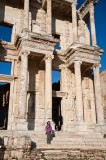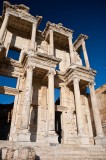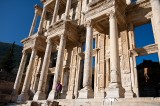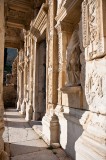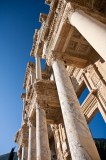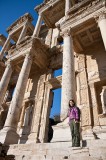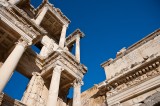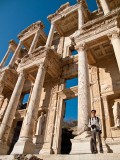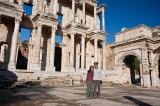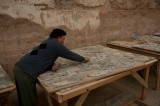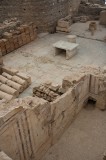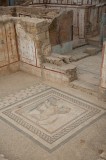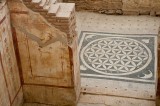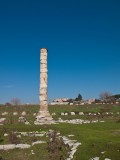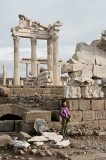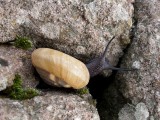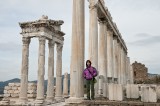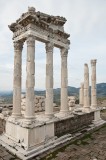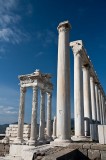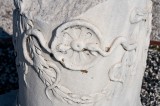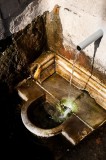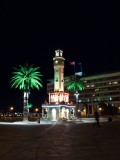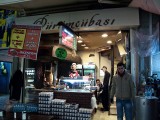
Ephesus and Pergamom
After Aphrodisias, we took a bus from Pamukkale to Selchuk where we visited the remains of Ephesus early the next day. We went early enough to beat the numerous tour groups visiting Ephesus and we had the Library of Celsus (125 AD) to ourselves for 15 minutes or so before the tour groups started arriving. Apart from the library, we also enjoyed wandering along the Sacred Way through Ephesus and also marvelling at the size of the theatre, which with a seating capacity of 44,000, is believed to be the largest outdoor theatre in the ancient world.
When travelling, our philosophy is to pay entrance fees and other costs for these experiences since it's a small fraction of the cost it takes to get to those places; we prefer saving on food and accomodation costs rather than saving on these experiences. And so we coughed up the extra money for the entrance fee to enter the Terrace Houses in Ephesus, which are houses occupied by upper class families in the Roman/Byzantium era; these houses were occupied from 1st century AD to 7th century AD. After visiting the houses, we thought it was well worth the money to see the archaeologists at work reconstructing shattered marble panels, as well as the houses with their mosaics and murals.
After we were done with Ephesus, we walked back to town and stopped by the Temple of Artemis to see its sole remaining column. The Temple of Artemis was completed around 550 BC and is one of the seven wonders of the ancient world mentioned by Herodotus; it was destroyed by a mob in 401 AD. We had a great lunch in Selchuk at the restaurant Amazon.
From Selchuk, we took a bus to Bergama, which was the capital of the Kingdom of Pergamom during the Hellenistic period (323 - 146 BC). Pergamom was where parchment (pergamenum) was perfected. The acropolis of Pergamom has a great setting on the hilltop overlooking the city, and the theatre is built into the hill and has similarly good views. Being elevated, it was very windy when we were there and Serene took a great photo of my wool hat's ear flaps flying back in the wind while I was standing near the edge of the hill overlooking the theatre.
Apart from the acropolis in Bergama, we also went to the Red Basilica and the Asclepion. The Red Basilica is not worth the entrance fee because you are not allowed to enter the basilica, and so you get the exact same view of the basilica by walking outside the complex. The Asclepion was a Temple of Asclepius, the god of healing, and we wandered around the tunnels and temples and also debated whether we dared to drink from the sacred well. After Bergama, we returned to Izmir where we stayed a night before flying back to Istanbul.
